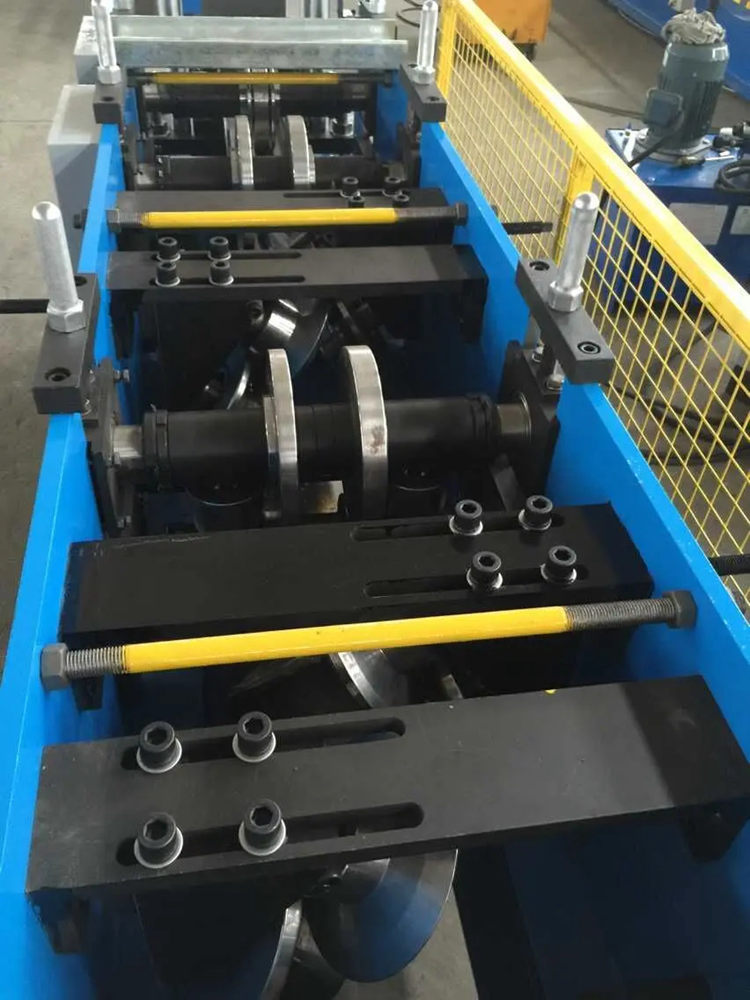Understanding Cold Roll Forming Machines for Wall Angles and C Channels
In the world of construction and manufacturing, efficiency and precision are paramount. This is where cold roll forming machines come into play, particularly in the creation of steel components such as wall angles and C channels. These machines are vital in providing the structural integrity and design flexibility required in modern building projects.
What is Cold Roll Forming?
Cold roll forming is a process where metal is shaped at room temperature to create specific profiles. The metal, often in the form of steel strips or sheets, is passed through a series of rollers that progressively shape it into the desired profile. This method is preferred for its efficiency in producing uniform sections with excellent dimensional accuracy.
Importance of Wall Angles and C Channels
Wall angles and C channels are essential components in the construction industry. Wall angles are used to create a secure framework for walls, enabling the installation of drywall or other finishing materials. They provide structural support and ensure a level surface, which is critical for aesthetic and functional purposes.
C channels, on the other hand, are often utilized as structural elements in various applications, including roofs, floors, and walls. Their design allows for significant load-bearing capacity, making them ideal for framing systems. The versatility of C channels and wall angles enables architects and engineers to create innovative building designs while maintaining strength and stability.
The Role of Cold Roll Forming Machines
Cold roll forming machines designed for wall angles and C channels come equipped with advanced technology to enhance production efficiency. These machines utilize high-speed roll forming techniques, reducing waste and labor costs while increasing output. They can produce continuous lengths of these components, which minimizes joining and seam issues commonly associated with traditional manufacturing methods.
Moreover, modern cold roll forming machines often incorporate automation, allowing for precise control over the profile dimensions and reducing the risk of human error. This precision is particularly crucial in projects where exact measurements are vital for structural integrity.
Advantages of Cold Roll Forming

1. Cost-Effectiveness The cold roll forming process requires less material than traditional fabrication methods, leading to significant cost savings.
2. High Strength-to-Weight Ratio The shapes produced are strong yet lightweight, which is advantageous for both transportation and installation.
3. Customizability Cold roll forming machines can be adjusted to create various profiles and sizes, catering to different project requirements.
4. Reduced Lead Time With the capacity for continuous production, cold roll forming machines can significantly reduce the lead time for obtaining wall angles and C channels.
5. Environmental Benefits The process generates less waste compared to traditional manufacturing methods, making it a more environmentally friendly option.
Applications and Future Trends
As the construction industry continues to evolve, the demand for cold roll forming machines is on the rise. Their applications extend beyond traditional construction to sectors such as automotive, aerospace, and furniture manufacturing. The growing emphasis on sustainability and resource efficiency is likely to propel further advancements in cold roll forming technology.
In the future, we can expect to see more integration of automation, artificial intelligence, and machine learning in cold roll forming machines. These advancements will improve precision, enhance design capabilities, and enable manufacturers to respond swiftly to changing market demands.
Conclusion
Cold roll forming machines play a crucial role in the efficient production of wall angles and C channels, contributing significantly to the construction industry's ability to deliver high-quality, durable structures. Understanding the capabilities and benefits of these machines is essential for professionals in the field, as they seek to innovate and enhance their manufacturing processes. As technology continues to advance, the cold roll forming process will undoubtedly adapt, driving the future of construction manufacturing toward greater efficiency and sustainability.